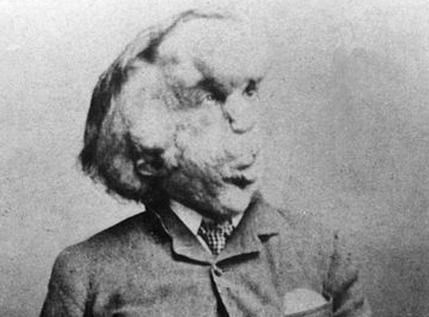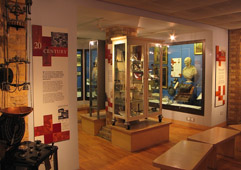Buy this advertising space
my.britevents.com/adsThis ad costs just £0.001 per page. Can you afford NOT to buy this advert?

my.britevents.com/adsThis ad costs just £0.001 per page. Can you afford NOT to buy this advert?

www.booking.comSave up to 40% off UK hotel rooms. The perfect weekend getaway.

redletterdays.comIrresistable gifts, including short breaks, thrills, attractions, adventure and gifts.
BritEvents takes a look at some of the lesser-known museums in London, devoted to the more unusual side of British life.

Most visitors to London would not dream of missing the city's great museums, including the British Museum, National Gallery and Victoria & Albert Museum.
However, London has dozens of smaller and lesser known museums and galleries,devoted to such subjects as Sherlock Holmes, cricket, and primitive hospital operating techniques.
Over the centuries, London has been home to many famous writers, artists, and scientists, all of whom have left their mark on the city.
The eminent psychiatrist, Sigmund Freud, lived in London for several years after fleeing Nazi-occupied Vienna, and his former spacious house is now a museum. On display are his famous consulting couch, as well as many letters, photographs, and personal effects.
One of the most famous names in science was Michael Faraday, who is credited with discovering magnetic rotation, and there is a small museum devoted to his life and work, located near Piccadilly.
The two rooms comprising the museum are the actual rooms where Faraday worked, and today are part of the Royal Institution, the world's oldest independent research organization.
The writer Charles Dickens lived in Doughty Street for several years, and today the rooms in the elegant town house are virtually as they were when Dickens wrote some of his most famous books. One of London's most famous residents was fictional - the famous detective Sherlock Holmes lived at 221B Baker Street, and at that same address today is a small museum.
If you are lucky, you may meet the great man himself, or if he is out on a case, his long-suffering landlady may greet you at the door.
One of London's most unusual museums must be Sir John Soane's House. The architect's former home is filled with antiques and paintings, including Hogarth's 'The Rake's Progress', as well as various Egyptian artifacts, including the sarcophagus of Pharoh Seti I. The house is also notable for its architectural illusions, such as split level floorsand use of mirrors, as well as its clever use of the limitedspace.
The building's main picture gallery, for example,contains three times the number of paintings that a room of that size would normally hold, without seeming overly cluttered.
Two of the most popular sports in England are rugby and cricket, and there are small museums devoted to both of these games, both of which are often confusing to overseas visitors.
The Museum of Rugby is located in the famous stadium at Twickenham, and displays include the oldest rugby jersey, and the famous Calcutta Cup.
Across town at Lord's cricket ground, there is a museum devoted to the 400 year history of cricket. Exhibits include paintings of some of the game's great players, and visitors also have the opportunity to tour the dressing rooms.
A visit to the Old Operating Theatre may well make you reluctant to visit a hospital again. The facility, which dates from the early part of the 19th century, is one of the oldest still in existence and during its day, specialized in treating women.
Guided tours give you a fascinating insight into what it must have been like to be operated on 200 years ago, and some of the primitive instruments on display look as though they are designed to inflict pain, rather than heal. The theater is housed in the top floor of a church, which is not unusual, as the wards of the original hospital were built around a church.
 Many visitors come here to see the fascinating displays on the Elephant Man and Jack the Ripper, both of whom are associated with this area of London.
Many visitors come here to see the fascinating displays on the Elephant Man and Jack the Ripper, both of whom are associated with this area of London.Across the river in Whitechapel, another museum with a medical theme is housed in the Royal London Hospital. The small museum here displays early medical equipment, including the bell that was rung as a sign that a patient needed to be subdued, as well as displays on the life and work of Edith Cavell.
Many visitors come here to see the fascinating displays on the Elephant Man and Jack the Ripper, both of whom are associated with this area of London.
London's lesser known museums are a fascinating alternative to the larger and often overcrowded museums. Between them, they tell the story of some of the people and events that helped to shape one of the world's greatest cities.